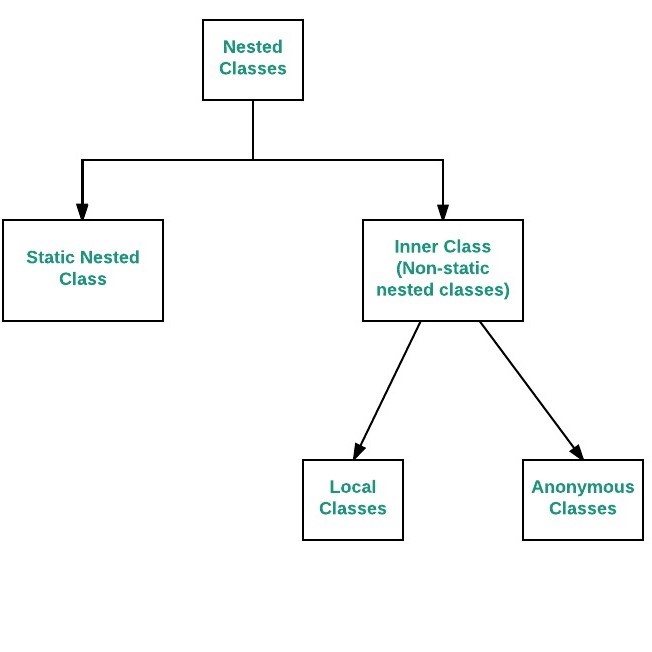
In Java, it is possible to define a class within another class, such classes are known as nested classes. They enable you to logically group classes that are only used in one place, thus this increases the use of encapsulation and creates more readable and maintainable code.
Syntax:
class OuterClass < . class NestedClass < . >>

In the case of normal or regular inner classes, without an outer class object existing, there cannot be an inner class object. i.e., an object of the inner class is always strongly associated with an outer class object. But in the case of static nested class, Without an outer class object existing, there may be a static nested class object. i.e., an object of a static nested class is not strongly associated with the outer class object. As with class methods and variables, a static nested class is associated with its outer class. And like static class methods, a static nested class cannot refer directly to instance variables or methods defined in its enclosing class: it can use them only through an object reference. They are accessed using the enclosing class name.
OuterClass.StaticNestedClass
For example, to create an object for the static nested class, use this syntax:
OuterClass.StaticNestedClass nestedObject = new OuterClass.StaticNestedClass();